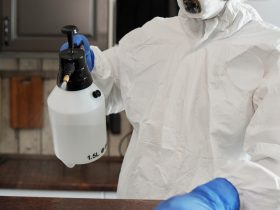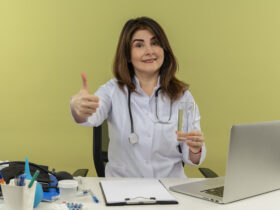Eye diseases are a common and serious problem. But, while some eye diseases have no cure, others can be treated with medications or surgery. So, if you’re worried about your vision and want to know which eye conditions can be treated, this blog post is for you. We’ll discuss the various types of eye diseases that are treatable, as well as the treatments available and how to prevent them. Whether you’re concerned about age-related macular degeneration or glaucoma, there’s something here for everyone!
Conjunctivitis
Conjunctivitis, also known as “pink eye,” is a common and highly contagious eye infection. Symptoms include red, itchy, and watery eyes. Treatment typically includes home remedies and over-the-counter (OTC) medication. However, some cases may require antibiotics.
Click here to check some attractive looks of Eyes: Sanpaku Eyes attractive
Cataracts
Cataracts are a common eye condition that occurs when the lens of the eye becomes cloudy. Cataracts can cause vision problems and make it difficult to see. Cataracts are usually treatable with surgery.
Macular Degeneration
Macular degeneration, also called age-related macular degeneration (AMD), is a progressive eye condition that affects central vision. It is the leading cause of vision loss in adults over the age of 50.
There are two types of macular degeneration: dry and wet. Dry AMD is the most common form, accounting for around 80 to 90 percent of cases. Wet AMD is less common but more serious, as it can lead to rapid vision loss.
There is no cure for macular degeneration, but there are treatments available to slow down its progression and help preserve vision. These include lifestyle changes, such as quitting smoking and eating a healthy diet; supplements, such as vitamins C and E; and injections of anti-VEGF medications.
Glaucoma
Glaucoma is a condition in which damage to the optic nerve leads to progressive, irreversible vision loss. It is usually caused by increased pressure within the eye. While there is no cure for glaucoma, early diagnosis and treatment can slow or stop its progression. There are two main types of glaucoma: open-angle and angle-closure. Open-angle glaucoma, the most common type, develops slowly and painlessly. Angle-closure glaucoma comes on suddenly and is often accompanied by severe eye pain and redness.
Diabetic Retinopathy
Diabetic retinopathy is a leading cause of blindness and visual impairment among adults in the United States. This serious complication of diabetes can damage blood vessels in the retina, the light-sensitive tissue at the back of the eye. If left untreated, diabetic retinopathy can lead to vision loss and blindness.
There are two forms of diabetic retinopathy: non proliferative and proliferative. Non proliferative diabetic retinopathy is the early stage of the disease and usually has no symptoms. Proliferative diabetic retinopathy is the more advanced stage of the disease and can lead to severe vision loss or blindness.
Treatment for diabetic retinopathy typically involves laser surgery to seal or destroy damaged blood vessels in the retina. In some cases, medication may be injected into the eye to stop abnormal blood vessel growth. Early diagnosis and treatment of diabetic retinopathy is important to help prevent vision loss or blindness.
For more information visit our page: Sanpaku Eyes Attractive

Age-Related Macular Degeneration
Age-related macular degeneration (AMD) is a condition that affects the central portion of the retina, known as the macula. The macula is responsible for our central vision, and AMD can lead to a loss of central vision.
AMD typically affects people over the age of 50, and is more common in women than men. There are two types of AMD: dry and wet. Dry AMD is the most common type, and usually progresses slowly. Wet AMD is less common, but can progress rapidly and cause serious vision loss.
There is no cure for AMD, but there are treatments available that can slow its progression and help preserve vision. If you have dry AMD, your doctor may recommend taking vitamin supplements or using eye drops to help protect your vision.
If you have wet AMD, your doctor may recommend injections of medication into your eye or surgery to remove abnormal blood vessels from your retina.
If you have any symptoms of AMD, it’s important to see an eye doctor so that you can begin treatment as soon as possible. With early diagnosis and treatment, you can help slow the progression of this disease and maintain your vision.
What is the best way to prevent eye diseases?
There are a number of steps you can take to help prevent eye diseases, such as:
-Wearing sunglasses or other protective eyewear when outdoors
-Quit smoking
-Eat a healthy diet rich in fruits and vegetables
-Exercise regularly
-See your doctor for regular checkups
Conclusion
Eye diseases can have serious implications for our quality of life and vision, so it is important to be informed about which eye diseases are treatable and what steps we can take to prevent them. By understanding the different types of eye diseases, their causes and possible treatments, you will be better equipped to address any issues with your own vision or those of someone close to you in a timely manner.
With early detection and proper treatment being key factors in successful recovery from many common eye ailments, regular check-ups by an optometrist should not be neglected.





